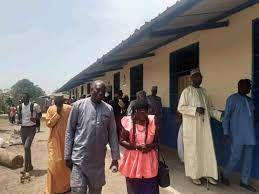By Awa DK Conteh
In an exclusive interview with The Gambia Daily, Mr. Hassoum Ceesay, Director General of National Center for Arts and Culture, highlighted a brief history of Crab Island.
Mr. Ceesay narrated that Crab Island, located in Banjul, was established in 1958 following a recommendation from the Baldwin Commission on education in The Gambia in 1952.
“Crab Island was the first official grammar secondary school, and in 1967, it was changed into secondary technical school, distinct from the high school which offered five years’ post primary course; while Crab Island offered 4-year post schooling,’’ he said.
In 1957, Governor Sir Percy Wyn Harris told the Gambian parliament, “Malfa infants school which was been built at Half Die would be handed over to the Ministry of Education soon; while the modern secondary school at Crab Island was well on its way to completion. It was hoped that we would see in this re-organized school the beginning of growing and steadily improved system of education.”
Ceesay said as the pioneer school in this new policy of secondary school, there were a lot of expectations on the school.
Mr. Ceesay noted that the popularly known Master Sillah, who was born in 1917 and entered school only in 1932 at the age of 15 “because his parents insisted that he got Quranic education first, attended St Mary’s school from 1932 to 1937 where he was under the tutelage of Rev. J.C Faye. In 1938, he went to Wesley Boys High School for his standard seven class; but could not continue due to school fees problem.
Mr. Ceesay explained that the former headmaster was advised to train as a teacher which he did and qualified as a first class teacher in 1939. From then onwards, he taught at many schools such as St Mary’s school, Kristi Kunda School and went to teach in Armitage in 1949. In addition, he was founder and headmaster of Bakadagi, Karantaba and Kuntaur Schools in the provinces. He retired in 1963 as headmaster of Crab Island School, but continued to teach at Muslim High School and then Banjul Municipal School until his death in 1992.
“A good educator should be able to deal with a child at any given age”, he once told a journalist in 1981.
Mr. Ousman Sillah, a former lawmaker and the chairperson of the Board of Trustees and Administration of the centre, said that the history and glory of Crab Island is inconceivable without the positive role played by these personalities as the heads managing the affairs and students of this educational institution from 1958 to 1998.
He said the board of trustees revived and transformed the school into a technical and vocational centre. He added that the board has resolved the legacy of their former heads of school. He named the former head teachers who were immortalised as follows: Mr. Arthur Cates, Alhaji Matarr Sillah(master), Charles G. Dixon and Alhaji A.E.W.F, Kama Badjie, Mr. James Abraham, Mr. kekoto Manneh, Mrs. Awa Jow Auber and Mr. Pa Ebrima O. Faal.
Mr. Sillah said some societies recognise and show appreciation of the good deeds of their forbearers and ancestors by naming edifices and spaces after them by way of immortalising their memory. He added that it is unfortunate that The Gambian society is yet to fully embrace such a culture of acknowledgment of those who invariably rendered to society selfless services that had transformed lives.
He noted that there are many personalities, both alive and departed, who we should celebrate as our heroes for having dedicated their entire lives in trying to make a difference in the lives of others; such as veteran teachers/educationists, medical, social and cultural workers, spokespersons, and the list goes on.
Sillah said it is their hope that this modest move will signal a departure from this laissez faire attitude or nonchalance towards the past and thus set the pace for society to start embracing culture of honouring people who deserve honour.

